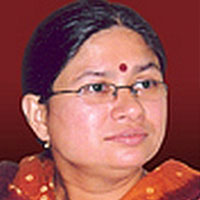Ashwini Kulkarni (Director, Pragati Abhiyan) puts forth the view that an unconditional income transfer programme like NYAY can help address multidimensional poverty and enable the most vulnerable among the poor to think beyond their survival. She suggests designing a ‘special purpose vehicle’ for the implementation of NYAY.
Can you explain why NYAY is necessary when we already have so many other poverty alleviation schemes? Why should we not just increase the budget for the existing schemes?
Poverty has many dimensions. There are many different reasons why the poor remain trapped in poverty. Indeed, we have many different poverty alleviations schemes but each is designed to help a slightly different group of poor. For example, MNREGA (Mahatma Gandhi National Rural Employment Guarantee Act) is primarily designed to provide work to the able-bodied in rural areas in off-season; pensions for widows target a specific vulnerable group; and so on.
The poor at the bottom of the pit have multidimensional reasons for poverty. If the poor families have one- or two-dimensional poverty and they get help in that direction, we have seen that they help themselves to come out of poverty. But when it is multidimensional then the task is far more complicated. Moreover, it is difficult to design programmes for the floating population of the urban poor.
Such households are destitute, marginalised, and vulnerable in more ways than one. It is difficult to find one or two support programmes that can help them. There are families with a chronically ill or physically challenged principal earner. There are families that have never had any resources to build on, or any assets they may own like land. There are families who have always lived in difficult geographies that are prone to disasters every few years.
For such people who have been living in chronic poverty for generations, NYAY is the most appropriate solution. For one, an unconditional income transfer programme like NYAY can help mitigate a multidimensional problem. The poor who fall through cracks and end up not qualifying for any of the poverty programmes are often the most vulnerable among the poor. For them, NYAY would be god-sent. It would give them some breathing space to think through the possibilities around them with food in their stomach. At least their struggle would not keep revolving around survival and they can think beyond that.
I would like to mention another problem with poverty alleviation schemes that is often ignored in discussions about newly proposed schemes. When a scheme is targeted at a particular group, say farmers, money from another reasonably well functioning programme run by the agricultural department may be diverted to the new scheme. The government gets credit for initiating a new programme without any additional expenditure. This is less likely to happen when the targeted group is a generic category like the ‘poor’. NYAY should be introduced as an additional programme, rather than a substitute for an existing functional programme.
Targeting the bottom 20% seems to be a herculean task. Which data can the governments use to identify the bottom 20%? What sort of targeting mechanism would you suggest?
Targeting is never devoid of problems. Having no perfect solution to this problem cannot stop us from starting a new programme. There are some possible ways out, however imperfect.
In 2011-2012 a survey of all households called the Socio-Economic Caste Census (SECC) was conducted by the Government of India. This survey has captured information about households such that by applying specific criteria households that are not poor can be excluded, and based on deprivation or vulnerability households that are poor can be included. The criteria are based on observable characteristics like the condition of house of residence, ownership of vehicles, etc., rather than incomes. Except for the caste data, the rest is in public domain. The SECC 2011 data has been used by states to select households under the National Food Security Act (NFSA).
This survey was conducted eight years back so it can be redone by improvising the same. The criteria and the methodology can be revisited and this database can provide the list for NYAY.
The proposed scheme is bound to generate perverse incentives for a significant part of the population. They would try to show that they are a lot poorer than they are or even to lower their incomes in order to qualify. How would you construct the scheme to minimise the damage from this obvious problem?
If the basic criterion for listing is income then there is a serious problem. But if we go by the SECC method then that would not be so. Also, if there is a fixed tenure of support to each household then the fear of perverse incentives will not perpetuate.
The deficiencies in the existing poverty alleviation schemes stems from weak State capacity. Will NYAY also not be hampered by the same?
Yes, there is this apprehension that if the same government apparatus is going to implement yet another poverty programme then the same apathy, leakages, and inefficiencies would engulf NYAY too.
For NYAY, it would be better to design a Special Purpose Vehicle – a separate administrative entity run by the central government with full freedom to plan and execute. Let the entire funding of the programme come from central government. The design and implementation of SECC, inclusion criteria, preparing of lists, and technological framework for Direct Benefit Transfer (DBT), be the responsibility of the central office. They will need to work in consultation with the state governments but the primary responsibility should lie with the central government. The women of the household can be made the recipient.
This post is part of I4I's e-symposium on NYAY: https://www.ideasforindia.in/topics/poverty-inequality/decoding-congress-nyay.html




 03 May, 2019
03 May, 2019 




Comments will be held for moderation. Your contact information will not be made public.